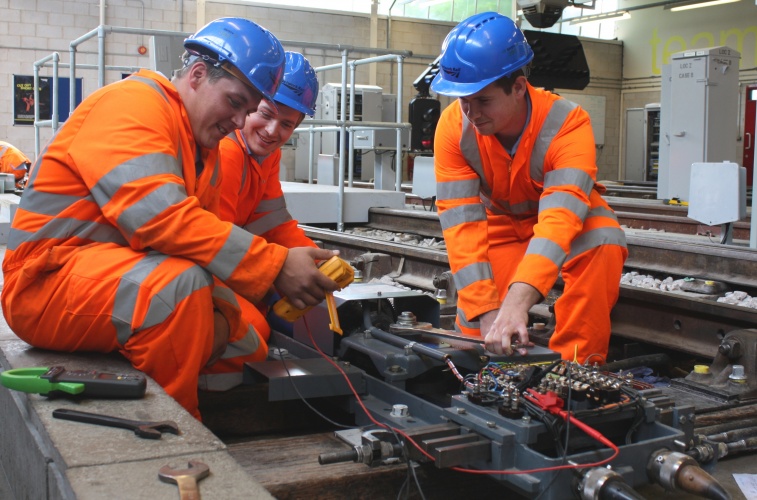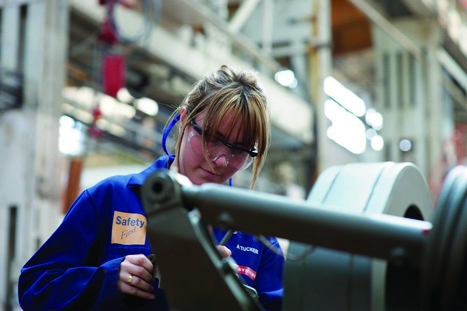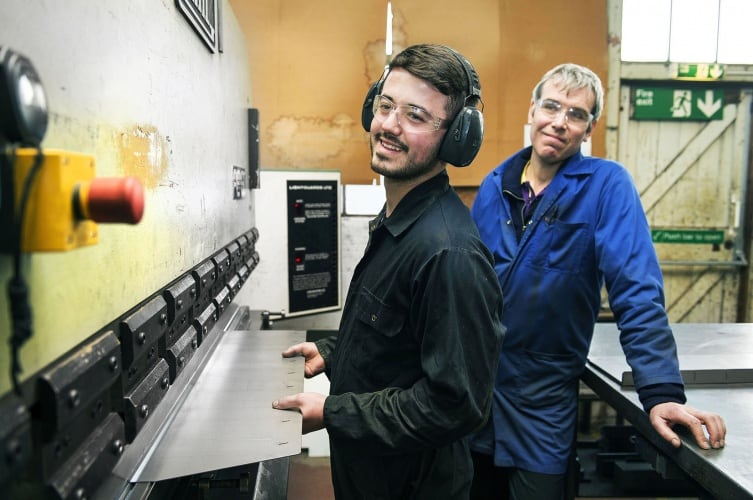 Graham Schuhmacher MBE is an Independent Skills Training Partner and former Head of Learning Services at Rolls-Royce. In an article based on topics from his new book, he examines the challenges involved in meeting the skills shortage.
Graham Schuhmacher MBE is an Independent Skills Training Partner and former Head of Learning Services at Rolls-Royce. In an article based on topics from his new book, he examines the challenges involved in meeting the skills shortage.
The problem with asking if three million more apprentices are going to be enough is that it depends. It depends on the performance of the skills system in delivering them, and more critically, moving back to a position where a majority of companies become involved again in early-career entry programmes such as apprenticeships.

Apprentice training has become a better understood route in spite of university still being the focus of much careers advice and guidance in schools. The growth of the Higher Apprenticeship has made a big difference for many young people who enjoy working and learning and applying that combined experience to real work. The Higher Apprenticeship is broadening the range of options on offer, adding programmes aimed at engineering professional and management roles, supply chain planning and control and purchasing.
However, not enough companies are offering entry level opportunities to young people for work experience through to apprenticeships at age 16 and 18 plus.
Technology is available to companies to produce high value/volume products to the very highest quality and at a competitive cost. But the UK is short of the skills required to take advantage of the opportunity that technology gives to be able to automate high value/volume engineering and manufacturing. With the ‘baby boomers’ retirements, further pressure will be put on companies who may find the opportunities for ’on-shoring’ work impossible to take advantage of because of the shortage of skills.
To help take advantage of the technology-based opportunity to grow our engineering and manufacturing sector, we must look to the oft-overlooked resources in the current workforce. People who have been in the workplace for some time and know how things work are in a strong position to grow into the developing roles by undertaking apprenticeship or bite-sized programmes.

Apprenticeships can help employees who can thrive in the changing workplace and where the production leaders, technical specialists and process improvement capability can be grown from. Age should not be an issue in deciding who can take advantage of an apprenticeship. The attitude of those who wish to take part is what matters.
The skills system should start from year 9/10 in schools, with young people having access to information on career options. Employers can play a part in helping schools understand current roles in the workplace, with visits to look and see the workplace as well as employees going into schools to talk about their jobs.
Some young people are ready to move to an environment that is closer to a work situation with University Technical Colleges (UTCs) offering exactly that type of mixed technical and academic experience. The most successful UTCs have strong links with local employers who can offer a clear line of sight to work, whether this is directly into apprenticeships or via university.
Many companies, who in the past trained apprentices, have lost the capability to become involved in the apprenticeship programme today, and need a skills system to be a clear focal point to go to for help.

The skills system is the combination of schools, colleges, universities, training organisations and businesses that train their own and other companies’ employees, and these should become local skills hubs. They should be close enough to the employers that they understand their needs and are able to support them with their workforce development throughout a person’s career.
So what should we be doing to hit the target of three million apprentices? There are four key points:
- Focus on making the skills system work to deliver the needs of the individual looking to develop attributes that will provide them with an income for life and for the needs of business both at an entry level and through career development of their workforces.
- At the 14-18 year old phase, high-quality careers advice and guidance are needed with close relationships with employers so that accurate information is available on roles and career paths along with earning potential is clear to young people.
- Education institutions, large employers and other training organisations should work to bring employers into their organisations to influence the curriculum and support the organisation in becoming the ‘local skills hub’.
- The Higher Apprenticeship programme must be developed across other roles. If two-thirds of employment growth is in the areas of technician and professional roles, this programme is ideally suited to meet the demand.
This article is adapted from a chapter in ‘A Race to the Top – How to achieve three million Apprenticeships by 2020’, written by Graham Schuhmacher, edited by David Way CBE and published by Winchester University Press.





Nanogenerator consumes CO2 to generate electricity
Whoopee, they've solved how to keep a light on but not a lot else.